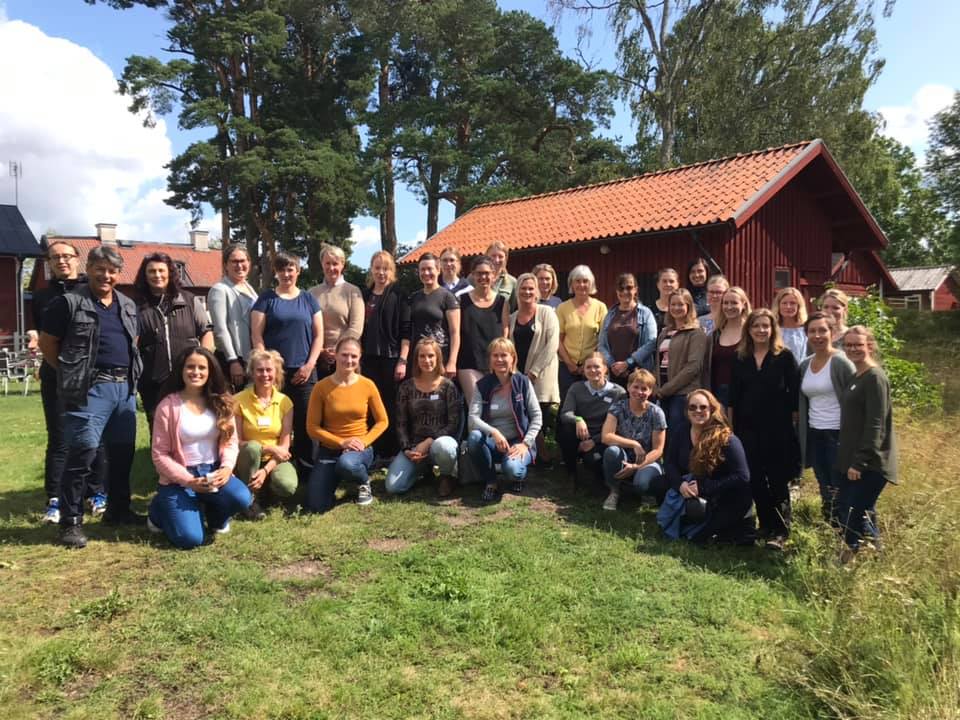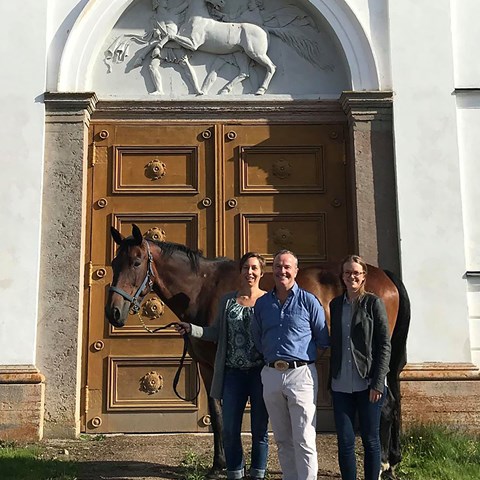Participants travelled from the Nordic countries and even from Brazil and Australia to join a group of horse enthusiasts and international leading scientists in equitation science and animal welfare science.
 Fotograf: Carolyne Texeira
Fotograf: Carolyne Texeira
“Having both postgraduate students and industry stakeholders was a challenge but chiefly it was an opportunity to exchange ideas, facilitate communication and help each other to become better in distinguishing fiction from fact and to base horse welfare assessment on evidence-based scientific data, rather than merely subjective judgement”, said Dr Elke Hartmann from the Swedish University of Agricultural Sciences (SLU), who initiated and led the course together with Dr Maria Vilain Rørvang (SLU). “Bridging science with practice is central if we want to improve horse welfare and human safety”, said the course organisers, and “hopefully we have planted many seeds during the course of this week”, they continued.
As a scientific discipline, equitation science uses robust quantitative and qualitative scientific methods to define and measure the impact of human interventions on horse welfare.
“Equitation science does not aim to turn equitation into a science or to tell riders what to do, but to show what works and what doesn’t in terms of horse welfare and training outcomes”, emphasised Professor Paul McGreevy, one of the invited international lecturers. “Innovative technology, such as rein tension meters to measure the contact between the rider’s hands and the horses’ mouth via the bit, could help to remove emotiveness from the current horse welfare debate”, he added.
Central questions during the course addressed the nature of horses, their cognitive abilities, assessment of stress, welfare and quality of life, and key characteristics of good horse trainers. These questions confirm that horse welfare assessments extend well beyond the training centres or competition arenas because performance alone is unlikely to be a reliable indicator of good horse welfare. Taking into consideration the other 23 hours of the horse’s day is equally important because horse carers’ knowledge and skills have a significant effect on horse welfare.
“Horse sport is currently in the public eye, and without a social license to operate, we won’t be watching horse sports”, said Professor Paul McGreevy. Applying a cost-benefit approach to assess the impact of different equitation scenarios on horse welfare was one of the exercises for the course participants as they discussed how we could make ethical decisions to justify or reject certain practices.

“Fear-testning" practicals with Associate Professor Janne W. Christensen and Dr Maria V. Rørvang.
The course has also shed light on the questions: What distinguishes science from fiction? What to watch for when evaluating the quality of experimental studies and the popular articles that report on scientific findings? How can we translate science into accessible reports that facilitate direct uptake in practice?
“Hopefully, by providing some answers to the many questions surrounding horse welfare and training, the course will promote communication between research and practice to collectively ensure sustainable and ethical use of horses”, Elke and Maria summarized by paraphrasing Paul McGreevy; becoming reflective practitioners and reflective scholars will certainly contribute to achieving this goal.
The course ended last Friday with a panel discussion including Dr Peter Kallings from the Swedish Equestrian Federation (hairman of Equine Welfare Committee), Dr Mari Zetterqvist Blokhuis (professional riding teacher), and Cecilia Ekeberg (veterinarian, farrier).
“We know a lot about horses and equitation science, but there is a need to communicate this knowledge to bridge the gap between science and practice. I think this course is an important step towards that”, emphasised Dr Kallings at the panel discussion.

 Fotograf: Carolyne Texeira
Fotograf: Carolyne Texeira